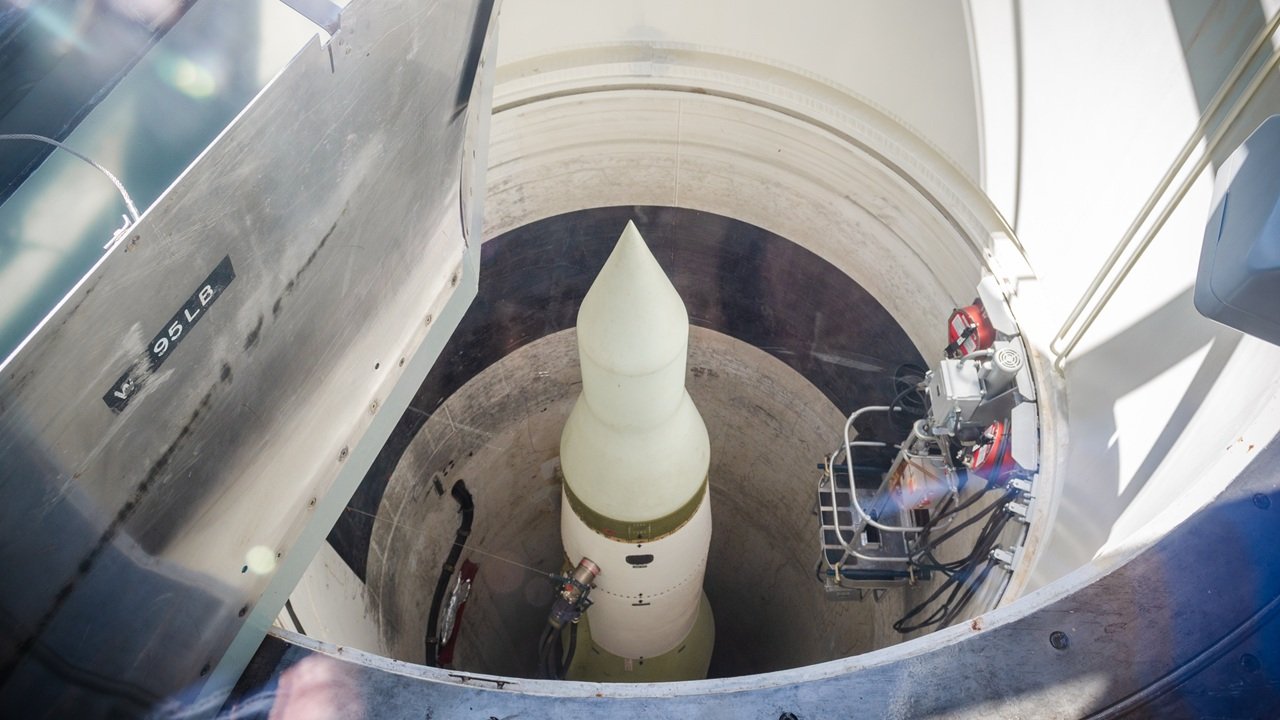The Minuteman III is a three-stage, solid-fuel rocket, meaning it can be launched with minimal preparation—an essential aspect for deterrence.
As representatives from the United States government and the Russian government are set to meet in Riyadh, Saudi Arabia, to discuss the initial outlines of a ceasefire in the Ukraine War, the United States Air Force announced that they were scheduled to test a Minuteman III intercontinental ballistic missile (ICBM) on the evening of February 18 during a window of 11pm Pacific Time to 5am on February 19. The launch is scheduled to take place at the Vandenburg Space Force Base in California.
The Air Force Global Strike Command noted in its comments to reporters that these launches were scheduled years in advance, meaning that one should not read too much into the timing. Nevertheless, one cannot help but notice the way this launch will be interpreted by the world’s great powers.
After all, for the last few years, ever since the Ukraine War erupted, the world has danced on the edge of nuclear war in ways not experienced since the height of the Cold War between the United States and Soviet Union.
The Trump Context
For his part, President Donald Trump has expressed an interest in meeting with his Russian and Chinese counterparts soon to discuss cutting the nuclear arsenals of the United States, Russia, and China, by 50 percent. Whatever Trump’s long-term goals, he clearly wanted to continue with the test of the Minuteman III ICBM as the Riyadh talks were underway.
Furthermore, Trump wanted to demonstrate America’s long-range strike capability to other rivals, such as Iran, who became galvanized during the Biden administration. Trump likely wants this test, on some level, to demonstrate strength and resolve in an America that is now under new management. The new president is keen on using America’s nuclear weapons arsenal as a bargaining chip to secure better deals from American adversaries—not just Russia, but from every one of America’s major rivals.
Whether or not this is a sound policy is not the point. Trump believes this is his best shot at attaining stability and a modicum of peace on the international stage over the next four years. But to indicate his resolve and seriousness, the new president must first flex America’s nuclear muscles—as well as determine how effectively the U.S. weapons work after four years of relative inattention from Trump’s predecessor, President Joe Biden.
So, there was no need for Trump to change or interfere with the launch.
Understanding the Minuteman III ICBM
For the last 50 years, the Minuteman III ICBM has been the cornerstone of the United States’ strategic nuclear deterrent. The Minuteman III is the latest model in the Minuteman series, which began with the deployment of the Minuteman I in 1962 during the height of the Cold War. The program—named for the famous Revolutionary War militiamen who could prepare for battle at a minute’s notice—was initiated to provide a reliable, land-based nuclear deterrent that could survive a first strike nuclear attack by the Soviets and quickly retaliate effectively.
By the 1970s, the Minuteman III missiles were coming online. These devastating weapons had significant improvements over its predecessors, including greatly expanded range, accuracy, and multiple independently targetable reentry vehicles (MIRVs), allowing for an economy of force that is still a great force multiplier today. In essence, with its MIRV capability, a single missile could strike multiple targets.
Speaking of range, the Minuteman III can travel over 6,000 miles, enabling strikes anywhere in the world from American soil. These missiles can carry up to three warheads, each with a yield of up to 335-475 kilotons. The Minuteman III is a three-stage, solid-fuel rocket, meaning it can be launched with minimal preparation—an essential aspect for deterrence. Its guidance system has been continually upgraded, enhancing the accuracy and ensuring the weapons remain relevant in modern warfare.
Toward a New Paradigm
The biggest problem facing the Minuteman III is its age. Like much of the rest of America’s nuclear arsenal, the Minuteman III has been upgraded repeatedly—but, ever since the Cold War ended, the quality of maintenance for this system has been spotty at best. Despite its relevance today, the Air Force initiated the Ground Based Strategic Deterrent (GBSD) program to succeed the Minuteman III. This aims for a more cost-effective, modern system with enhanced capabilities.
Yet the GBSD is far off, and the prospects of Trump creating some kind of longer lasting peace predicated upon mutual disarmament between the great powers are low. Until either the GBSD or Trump’s denuclearization policy can be fully implemented, the United States will need its nuclear deterrent. What’s more, given the age of that deterrent, Washington must know with certainty that all systems in the nuclear force will work as they are meant to—a fact that the California test is meant to ascertain.
About the Author: Brandon J. Weichert
Brandon J. Weichert, a Senior National Security Editor at The National Interest as well as a Senior Fellow at the Center for the National Interest, and a contributor at Popular Mechanics, consults regularly with various government institutions and private organizations on geopolitical issues. Weichert’s writings have appeared in multiple publications, including the Washington Times, National Review, The American Spectator, MSN, the Asia Times, and countless others. His books include Winning Space: How America Remains a Superpower, Biohacked: China’s Race to Control Life, and The Shadow War: Iran’s Quest for Supremacy. His newest book, A Disaster of Our Own Making: How the West Lost Ukraine is available for purchase wherever books are sold. He can be followed via Twitter @WeTheBrandon.
Image: Shutterstock.
